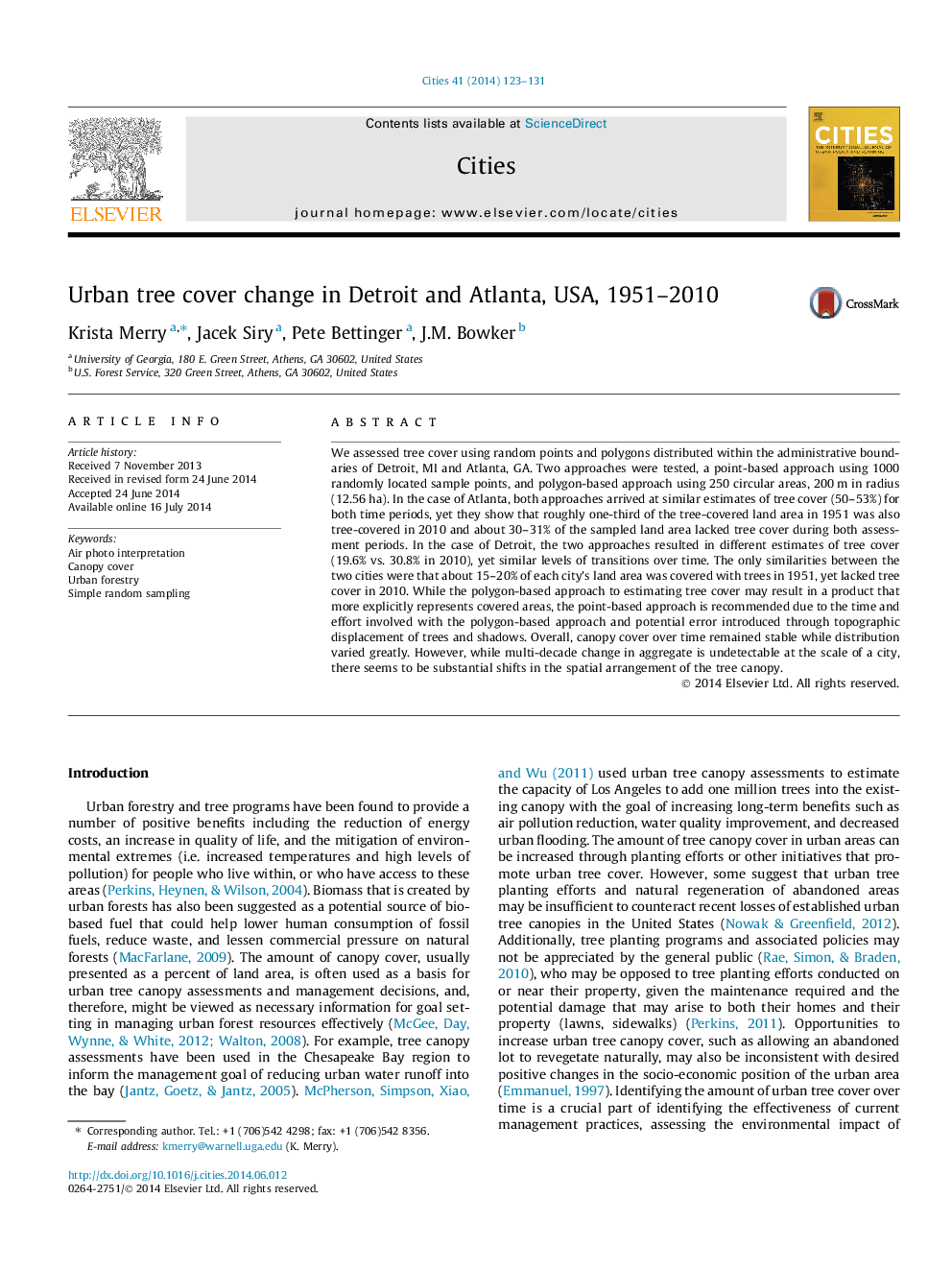| Article ID | Journal | Published Year | Pages | File Type |
|---|---|---|---|---|
| 10489866 | Cities | 2014 | 9 Pages |
Abstract
We assessed tree cover using random points and polygons distributed within the administrative boundaries of Detroit, MI and Atlanta, GA. Two approaches were tested, a point-based approach using 1000 randomly located sample points, and polygon-based approach using 250 circular areas, 200Â m in radius (12.56Â ha). In the case of Atlanta, both approaches arrived at similar estimates of tree cover (50-53%) for both time periods, yet they show that roughly one-third of the tree-covered land area in 1951 was also tree-covered in 2010 and about 30-31% of the sampled land area lacked tree cover during both assessment periods. In the case of Detroit, the two approaches resulted in different estimates of tree cover (19.6% vs. 30.8% in 2010), yet similar levels of transitions over time. The only similarities between the two cities were that about 15-20% of each city's land area was covered with trees in 1951, yet lacked tree cover in 2010. While the polygon-based approach to estimating tree cover may result in a product that more explicitly represents covered areas, the point-based approach is recommended due to the time and effort involved with the polygon-based approach and potential error introduced through topographic displacement of trees and shadows. Overall, canopy cover over time remained stable while distribution varied greatly. However, while multi-decade change in aggregate is undetectable at the scale of a city, there seems to be substantial shifts in the spatial arrangement of the tree canopy.
Related Topics
Social Sciences and Humanities
Business, Management and Accounting
Tourism, Leisure and Hospitality Management
Authors
Krista Merry, Jacek Siry, Pete Bettinger, J.M. Bowker,
